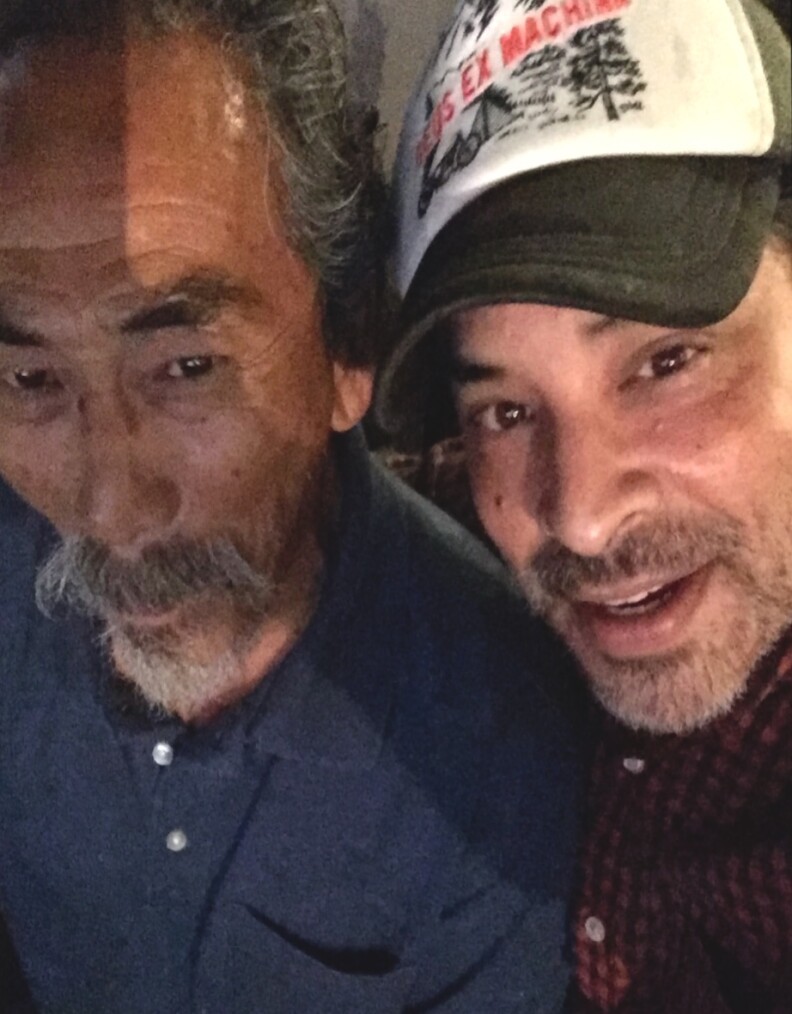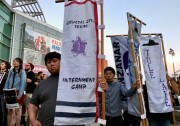When Shoichi Shingu heard there was a World War II exhibit at the Presidio in San Francisco honoring incarcerated Japanese Americans, he was heartened to think of his father being included.
The elder Shingu was born at the Gila River incarceration camp in Arizona, among the very youngest of the many thousands of people forced into camps and jails because of their Japanese ancestry.

But his name was missing from the exhibit, much to his son’s disappointment. The museum had relied on government rosters that are notoriously incomplete and riddled with errors.

“I want to honor his name, get him in there,” said Shingu, a digital marketing executive in Palm Desert. “He's kind of been forgotten and it kind of breaks my heart.”
In search of a remedy, Shingu joined an ambitious project that set out to identify every single person of Japanese descent incarcerated during WWII, the majority of them U.S. citizens.
For the past three years, project founder Duncan Ryuken Williams, who directs USC’s Shinso Ito Center for Japanese Religions and Culture, has been leading a team of scholars and volunteers around the country. The daunting task of accounting for so many people was complicated by the fact that there were 75 incarceration sites, from Hawaii to Arkansas, each operated by one of an assortment of government agencies.
The Total Count: 125,284 Names
But after cross-checking camp rosters against tens of thousands of documents — ranging from birth certificates to train transfer lists and army draft cards, the group has finalized a master list of 125,284 people and printed their names in a massive book.
-
Nonprofit's launching fundraiser to keep it afloat
-
USC study documents what residents want from trees
-
What candidates can — and can't — say they do
Billed as the first “names monument” to those incarcerated, the hand-bound 1,000-page tome is being unveiled Saturday at the Japanese American National Museum in Los Angeles, where it can be viewed for the coming year. Visitors will be encouraged to use a special stamp to leave a mark by a name so that by year’s end every person will have been recognized.
“Merging everybody into this kind of enemy group is something we’re trying to repair,” Williams said. “What we want is people acknowledging this history as a way of giving people back their individuality and personhood and their names.”

Historians and preservationists are praising the project for its commitment to ensuring no one is left out — from the thousands of babies who were born at a camp to the grandparents who did not live long enough to make it out of camp.
While the vast majority of people were incarcerated at one of 10 large incarceration camps overseen by the War Relocation Authority — including Manzanar in California and Heart Mountain in Wyoming — the list includes thousands of others who were held at more obscure sites.
“For families like ours, it's significant,” said Brian Niiya, content director for Densho, a Seattle-based nonprofit that educates the public about Japanese American incarceration. His mother’s family had been moved from Hawaii to a facility in North Carolina run by the State Department, then to a camp in Crystal City, Texas operated by immigration authorities.
The names project “puts you on the map, so to speak, and restores your story to this larger incarceration story,” he said. “It’s great to see this treated as a totality.”
Earlier this year, the initiative received $3.4 million from the Mellon Foundation, which has allowed the team to expand its aspirations to include printing the book of names and giving copies to survivors for free.

A Searchable Database
Also on Saturday, the project is launching a website with a searchable database of those incarcerated. Survivors and descendants are encouraged to register any corrections or omissions. Williams said the database should be “99.5%” accurate, but he wants to get to 100%.
Another phase of the project starting in 2024 involves building more unconventional monuments. "Light sculptures" will be erected at some of the large incarceration camps with museums that will allow for light shows projecting the names of those who were incarcerated.
Throughout the different phases of the project, enthusiastic volunteers have played a key role.
Shingu refused any compensation for the eight months he spent checking — and re-checking — the accuracy of records from the Poston War Relocation Center in Arizona, where more than 17,000 Japanese Americans and nationals were incarcerated.
Shingu said he’s simply grateful to learn about what happened, noting that his older relatives spoke little of what they had to endure in camp.
“I mean, I can't even tell you — I get chills,” he said. “Just seeing the names made it real.”

Contributions From Volunteers
USC’s Williams also leaned on volunteers for help in the creation of the book of names going on display. Survivors and their descendants were asked to gather soil from each of the 75 incarceration sites. An artist used a mixture of the soil to make ceramic pieces embedded into the front and back covers to serve as “guardians of all of the names that are in here,” Williams said.
Regina Boone, a photojournalist in Virginia, was dispatched to get soil from Fort Howard in Maryland, where her Japanese immigrant grandfather Tsuruju Miyazaki was once detained.

Through years of her own research, Boone discovered that Miyazaki ran a cafe and had started a family with Boone’s black grandmother in a racially-mixed community in coastal Virginia. He was arrested in the hours after Japan bombed Pearl Harbor and after a month was moved to Fort Howard.
Miyazaki would be shuffled around the country two more times — first to an incarceration camp in Arkansas, then to Chicago, to help fill a wartime labor shortage. He would never see his family again: he died of tuberculosis the year after the war. Boone sees the book of names as a way to highlight the lesser-known story of a Japanese immigrant in the South and that of his black family.
“This is Japanese history,” Boone said. “This is Black History. I mean, it's all of our history.”

Kyoko Oda, a retired school principal from Van Nuys, helped to collect soil from the Tuna Canyon Detention Station (she sits on the board of a group that raises awareness about the site’s history) and the Kilauea Military Camp, which she visited while on a family trip to Hawaii.
Oda was eager to see the outcome of the names project. She’s part of a group working to build a names monument in Torrance. That initiative has already secured $5 million in state funding but needs a master of list of names to engrave on granite walls, she said.
Oda herself is a survivor, born at Tule Lake, a higher-security camp in northern California where her family was moved because her father, a judo master from Boyle Heights, had not answered a loyalty test to the U.S. government’s satisfaction.

Oda said for years, her family carried the stigma of being incarcerated at Tule Lake. But she has been encouraged to see attitudes about the Tule Lake families change as younger generations commend them for taking a stand against wartime racism. Oda said she now dares to hope that her loved ones will be honored by a monument built in her lifetime.
“My parents are gone. My sisters are gone,” Oda said. “So this is a very big thing for me to see their names on this wall, and to pay my respects.”










